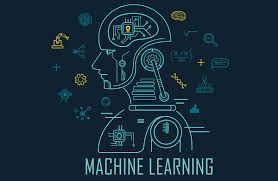AI (Artificial Intelligence) and ML (Machine Learning) are related concepts but have distinct differences. Here are the key differences between AI and ML:
Definition: AI refers to the broader field of computer science focused on creating intelligent machines that can simulate human intelligence and perform tasks that typically require human intelligence, such as problem-solving, decision-making, and understanding natural language. ML, on the other hand, is a subset of AI that involves the development of algorithms and statistical models that enable computers to learn from and make predictions or decisions based on data, without being explicitly programmed.
Approach: AI can be achieved through various approaches, including rule-based systems, expert systems, knowledge graphs, and more. It encompasses a range of techniques to simulate human intelligence, including but not limited to ML. ML, on the other hand, focuses specifically on training models on data and learning patterns or relationships from that data to make predictions or take actions.
Data Dependency: AI systems can be built using various techniques, and they may or may not rely heavily on data. AI can be rule-based, where predefined rules are used to make decisions, or it can incorporate ML techniques to learn from data. ML, on the other hand, is data-dependent and relies on training data to learn patterns and make predictions. ML algorithms learn from the data they are provided and use that knowledge to generalize and make predictions on new, unseen data.
Human Intervention: AI systems can be designed to work autonomously or with minimal human intervention. They can make decisions and perform tasks without human interference, relying on predefined rules or learned knowledge. ML algorithms require human intervention initially to train the models by providing labeled or unlabeled data, defining the learning objectives, and fine-tuning the parameters. Once trained, ML models can make predictions automatically without constant human intervention.
Scope: AI encompasses a broader range of capabilities, including natural language processing, computer vision, speech recognition, robotics, and more. It aims to replicate human intelligence across various domains. ML, while a subset of AI, focuses specifically on statistical learning algorithms and techniques to make predictions or decisions based on data.
Complexity: AI systems can be highly complex, involving multiple components and techniques to simulate human intelligence. They can incorporate ML models as part of their overall architecture but can also include other non-ML components. ML, on the other hand, is more focused on the statistical and mathematical aspects of learning from data and making predictions, often using algorithms like linear regression, decision trees, neural networks, etc.
In summary, AI is a broader concept that encompasses the development of intelligent machines, while ML is a subset of AI that specifically deals with training models on data to learn patterns and make predictions. AI can be achieved through various approaches, and ML is one of the techniques used within the field of AI.
Copy Rights Digi Sphere Hub






No comments:
Post a Comment